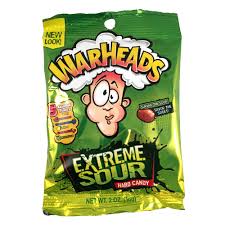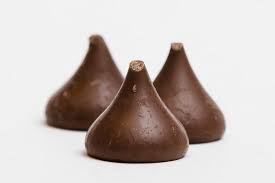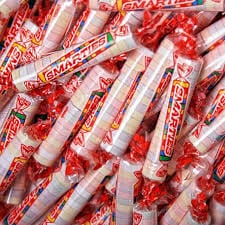War Heads were invented in Taiwan around 1975. The Foreign Candy Company was the first to import the sour candy into the United States in 1993. In 1999, War Heads was referred to as a “$40 million brand.” Today, they are manufactured by Impact Confections.
A real warhead is the front of a rocket. This is what holds the explosives. The name of the candy is a pretty accurate description of what your mouth feels like as you eat it. War Heads are an extremely sour candy not for the weak. . It is nearly impossible for someone to eat War Head candies without making a sour face. The intensity is insane!
Each piece of candy is coated in a layer of malic acid, citric acid, and ascorbic acid. Malic acid is the same acid found in green apples, giving them their sour kick. The first minute of having the candy in your mouth requires serious dedication and lack of concern for the feeling in your mouth. Luckily, the sourness subsides after a little bit and you’re left with a sweet fruity flavor. The different kinds of War Heads on the market currently are black cherry, watermelon, lemon, blue raspberry, and apple.
On every package, there is a warning label, which reads, “WARNING: Eating multiple pieces within a short time period may cause a temporary irritation to sensitive tongues and mouths.”
I, personally, have never eaten a candy more sour than War Heads. I remember the very first time I tried a War Head. I was probably about eleven years old. The concept of an extremely sour candy intrigued me, and all of my friends could not stop talking about this crazy candy. So, I took a piece and popped it into my mouth. Almost instantly I spit it right back out. Never in my life had I experienced such sourness. Watching my friends just keep them in their mouths, sometimes eating two at a time, baffled me.
In high school, I would buy bags of War Heads just so I could give them out to other people. I still could not eat them, but I thought it was so funny watching my friends eat them. The funny faces they made would make me laugh so hard.
War Heads are only for those whose mouths are not sensitive in the slightest and truly love extremely sour candy. If you choose to try them out, all I can say is “Good luck!”
Sources:
https://www.candyfavorites.com/blog/warheads-for-extreme-candy-eaters-only/
https://www.chron.com/life/health/article/The-science-behind-how-Warheads-are-so-sour-4901092.php







